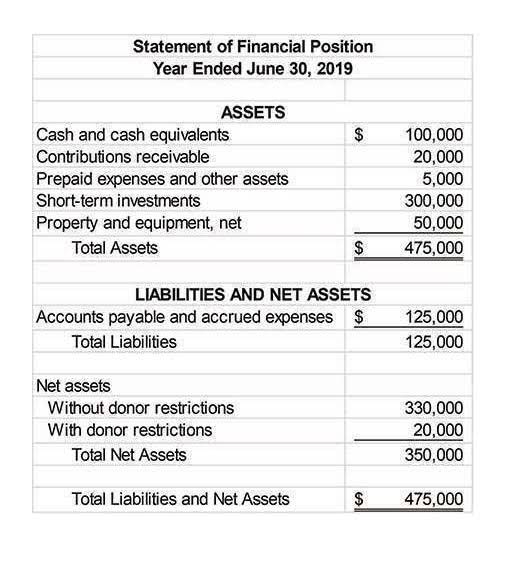Contribution Margin Ratio Formula Per Unit Example Calculation

Contribution margin refers to sales revenue minus total variable costs. It is the amount available to cover fixed costs to be able to generate profits. The contribution margin ratio is just one of many important financial metrics used for making better informed business decisions.

Contribution Margin Ratio Formula:
Some expected variable costs for companies include certain types of gym bookkeeping marketing materials, shipping, and labor. There are many ways to reduce these costs; for example, you can find alternate service providers. However, reducing the quality of your products could inevitably hurt your business reputation and sales, so you should be mindful of where you cut variable costs and when. That is, fixed costs remain unaffected even if there is no production during a particular period.

What Is the Difference Between Contribution Margin and Profit Margin?
Contribution margin is the remaining earnings that have not been taken up by variable costs and that can be used to cover fixed costs. Profit is any money left over after all variable and fixed costs have been settled. It means there’s more money for covering fixed costs and contributing to profit. You can calculate the contribution margin by subtracting the direct variable costs from the sales revenue. From the calculation above, by including the variable expenses, Pup n Suds used up $20,900 on variable costs.

How to use the contribution margin ratio in business
It helps assess the profitability of different products, services, or business lines. However, the contribution margin facilitates product-level margin analysis on a per-unit basis, contrary to analyzing profitability on a consolidated basis in which all products are grouped together. The contribution margin is not necessarily a good indication of economic benefit. Companies may have significant fixed costs that need to be factored in.
- Each product has its own contribution margin, and since these margins vary, the WACM adjusts for the proportion of total sales for each product.
- If you can increase your sales volume, you can spread fixed costs across a higher number of units.
- Understanding the CM is crucial as it helps businesses decide which products to continue selling and which ones to drop.
- You work it out by dividing your contribution margin by the number of hours worked.
- On the other hand, the Fixed costs like rent and salaries, are $10 million (but these aren’t part of the formula).
In the realm of business, profit is the light that guides the path of sustainability and growth. Among the myriad financial indicators, the Contribution Margin Ratio emerges as a critical lighthouse, signaling the strength and performance of a company’s core operations. If you can identify products or services with higher CMRs, then you can allocate resources toward their growth. As they come to occupy a larger share of your revenue, your overall CMR should rise.
For every additional widget sold, 60% of the selling price is available for use to pay fixed costs. While the Ratio is a useful tool, it’s not without limitations. It doesn’t account for fixed costs, so it’s not a measure of overall profitability. Also, it’s crucial to consider it in the context of other financial metrics for a comprehensive business analysis. It involves subtracting the variable costs from the sales revenue, then dividing the result by the sales https://ontravelx.com/household-income-meaning-metrics-and-economic/ revenue. This gives the proportion of sales revenue that is not consumed by variable costs.
- You may also look at the following articles to enhance your financial skills.
- Managerial accountants also use the contribution margin ratio to calculate break-even points in the break-even analysis.
- Familiarizing yourself with your CMR can be the first step toward better profitability.
- Most of the revenue stays in the business to cover fixed costs and fuel growth.
- Aside from the uses listed above, the contribution margin’s importance also lies in the fact that it is one of the building blocks of break-even analysis.
Discover the next generation of strategies and solutions to streamline, simplify, and transform finance operations. Soundarya Jayaraman is a Content Marketing Specialist at G2, focusing on cybersecurity. Formerly a reporter, Soundarya now covers the evolving cybersecurity landscape, how it affects businesses and individuals, and how technology can help. You can find her extensive writings on cloud security and zero-day attacks. Learn about the time interest earned ratio and how to calculate it. Paul Boyce is an economics editor with over 10 years experience in the industry.

- Thus, to arrive at the net sales of your business, you need to use the following formula.
- Testing the right combinations reveals where customer willingness to pay aligns with operational efficiency.
- The Indirect Costs are the costs that cannot be directly linked to the production.
- In fact, we can create a specialized income statement called a contribution margin income statement to determine how changes in sales volume impact the bottom line.
In the Dobson Books Company example, the contribution margin for selling $200,000 worth of books was $120,000. Now, let’s try to understand the contribution margin per unit with the help of an example. Variable Costs depend on the amount of production that your business generates. Accordingly, these costs increase cm ratio with the increase in the level of your production and vice-versa. This means the higher the contribution, the more is the increase in profit or reduction of loss. In other words, your contribution margin increases with the sale of each of your products.
- To determine your contribution margin ratio, you must first understand your contribution margin.
- However, reducing the quality of your products could inevitably hurt your business reputation and sales, so you should be mindful of where you cut variable costs and when.
- However, ink pen production will be impossible without the manufacturing machine, which comes at a fixed cost of $10,000.
- The ratio helps predict how much extra money you’ll have if you increase sales, which can help you calculate how much money you’ll have left to hire employees or expand operations as you increase sales.
- That can help transform your labor costs from a variable expense to a fixed expense and allow you to keep those expenses under tighter control.
- Currently working as a consultant within the financial services sector, Paul is the CEO and chief editor of BoyceWire.
Knowing your company’s variable vs fixed costs helps you make informed product and pricing decisions with contribution margin and perform break-even analysis. The Contribution Margin Ratio has several applications in business analysis and decision-making. It is used in break-even analysis, which determines the sales volume needed to cover all fixed costs and achieve zero profit or loss. The break-even point in sales dollars is calculated by dividing total fixed costs by the Contribution Margin Ratio. The contribution margin ratio (CM ratio) is an important financial metric that shows how a company’s sales affect its profitability. It reflects the portion of each dollar of revenue that is available to cover fixed costs and contribute to net profit after variable costs have been paid.
How to Calculate Contribution Margin Ratio and Optimize Your Business’s Profitability
Comparing profits to costs can help you determine your business’s profitability and ensure your sales prices remain competitive. Many companies have fixed and variable costs that change from product to product and month to month. Knowing how your costs affect your profits is crucial to understanding your business’s financial health. The gross basis here refers to the total dollar or amount as a result of subtracting the sales revenue from total variable costs. While per unit basis refers to the difference between the selling price per unit and variable costs per unit. A contribution margin ratio measures the proportional relationship between revenue and variable costs.
